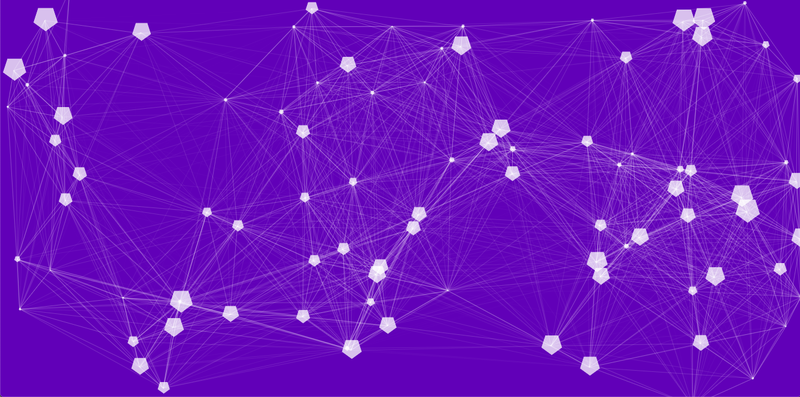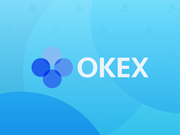Blockchain (Part 1)
6 minutes
Beginner
Blockchain is a distributed digital ledger technology, which is a relatively new and exciting way of recording transactions in the era of digital technology. Blockchain, first popularized by Bitcoin creator Satoshi Nakamoto, can revolutionize many of our modern processes such as supply chain management and protecting intellectual property rights and property rights while saving time and money.
What is blockchain?
Blockchain is a digital database in which records are stored in chronological order. Information in blockchain is stored in "blocks" linked together in a "chain" using common mathematical algorithms. The blocks contain data, usually transaction records, including the sender and recipient of the transaction, a timestamp, and the amount and type of currency sent.
Blockchains differ from other types of digital databases in several ways.
- A distributed database, decentralized. The data is stored on multiple servers scattered around the world at different physical points. Typically, this provides greater reliability, performance and transparency compared to traditional databases.
- Open source software. The entire network community can see the highlights of the code behind it and work together to find and fix bugs, glitches, or flaws.
- Data can only be added. Once the blockchain network has verified the new information, it cannot be changed. New data must be verified by the majority of the network, which means that responsibility for the security and reliability of the blockchain is shared, not taken over by one central organization.
How does blockchain work?

Blocks in a blockchain contain more than transaction data, they also have what is known as a hash. Cryptographic hash functions or hashes - the aforementioned mathematical algorithms - play a pivotal role in blockchain systems and are primarily responsible for why blockchain works.
Hashes are displayed as a variable series of numbers and letters in a block, for example: 4760RFLG07LDD492K8381O82P78C29QWMN02C1051B6624E99. This combination of numbers and letters is generated from the data within the block and acts as its digital signature.
Each block includes the hash of the previous block in its chain. This is how blocks are related to each other and how blockchain networks maintain their integrity. Changing any content in a block will change the hash, which is a red flag to other members of the network.
Put it all together, and you get a self-regulating network without intermediaries, where third parties can't control or interfere with transactions.
Proof of work and proof of stake
Files in the blockchain are distributed across a network of computers called nodes. To add information to the blockchain, a node must first integrate this data into a block along with the hash of the previous block. Then they must attempt to generate a new hash.
Once the hash for the new block is generated, nodes add the block to their version of the blockchain file and broadcast the update over the network. Most computers on the network must verify this new block and update their copy of the blockchain file for the update to be considered valid. If consensus is reached, the block becomes part of the chain forever and the computer or node that created it is rewarded.
The process in which computers compete for the creation of new blocks is called "mining". Blockchain networks conduct this competition in one of two ways:
Within the Proof-of-Work (PoW) system, nodes in the blockchain directly compete to see who can solve a complex mathematical equation first. The first one to do so gets the "proof" of their "work" and is granted the right to mine the next block of transactions. Then, the miner gets a reward for processing the block.
In the Proof-Of-Stake (PoS) system, nodes, which can also be called nodes, are selected using a computer algorithm that uses a certain degree of randomness. Nodes that own a large number of network tokens are more likely to be selected, rewarding their continuous participation in the network, rather than raw computational power. Those who are selected for block processing are called validators, not miners.
Types of blockchain networks

In the blockchain ecosystem, there are four main types of networks. All of them can be useful, but each is better suited for different use cases.
Public Blockchains
Public blockchains are the first type of blockchain network to be developed. This is a one-tier network associated with Bitcoin, which helped to popularize the technology behind it. They are open to everyone, and all transactions in the network can be tracked.
Public blockchains are also known as permissionless blockchains because anyone who joins can read or write to them anonymously without the need for verification. Anyone with internet access can register to become an authorized node, and network participants are responsible for reaching agreements about the state of the chain.
Examples: Bitcoin, Ethereum, Litecoin, NEO.
Private Blockchains
Private blockchains fundamentally differ from public blockchains because they are managed by a central authority—they are not fully decentralized networks. The central authority determines who can read, write and participate in the network's activity, so they are also known as permissioned blockchains.
Private blockchains offer more customization options and can be used to store confidential data. In exchange, participants are often required to undergo KYC (Know Your Customer) authentication, which means they must undergo special identity and biographical data verification. This means they cannot remain anonymous.
Examples: MultiChain and Hyperledger projects, Corda.
Hybrid Blockchains
Hybrid or semi-private blockchains were created to offer the best of both worlds by combining elements from both public and private types of blockchains. For example, they are managed by one organization, but can use both permission-based systems and permissionless systems for precise control over access to their data.
Transactions are usually not public, but can be audited if necessary. Users join the network as anonymous participants and only reveal their identity to other parties when participating in transactions.
Examples: Dragonchain, XinFin, Ripple.
Consortium Blockchains
Consortium blockchains are most similar to private networks, but have some common characteristics with public blockchains. They are controlled by several central bodies and interact in a decentralized network.
A pre-defined group of individuals or nodes is responsible for achieving consensus in consortium blockchains. Like hybrid blockchains, the ability to read or write to the network may be public or restricted to selected participants.
Examples: Marco Polo, Quorum, Energy Web Foundation, IBM Food Trust.
Due to the large amount of material, we decided to split the article into 2 parts. In the second part, we will tell you about the advantages and disadvantages of blockchain technology, as well as about the spheres of its application. Link to the second part.



